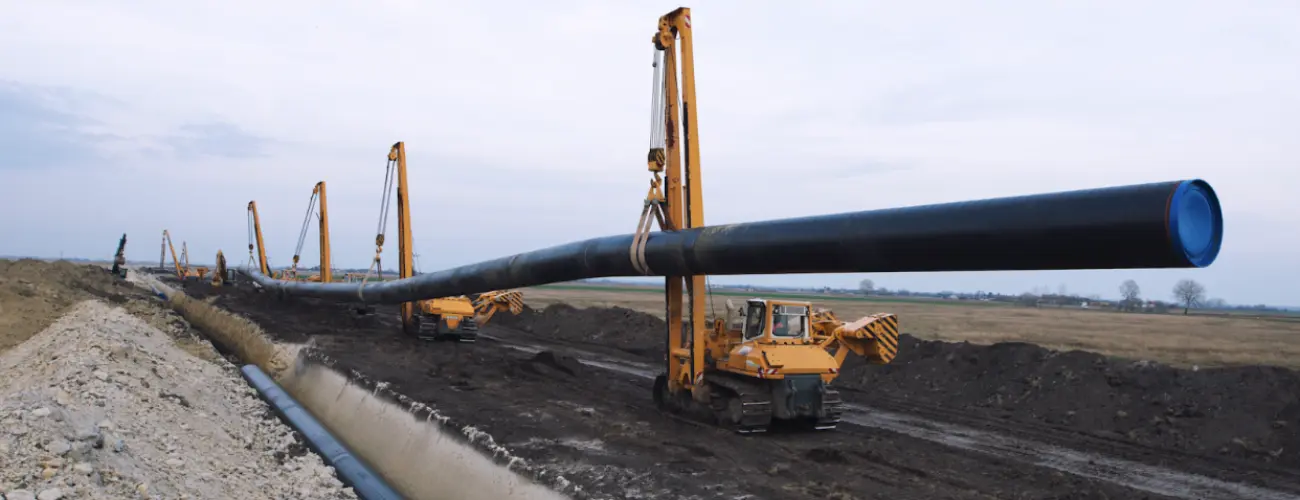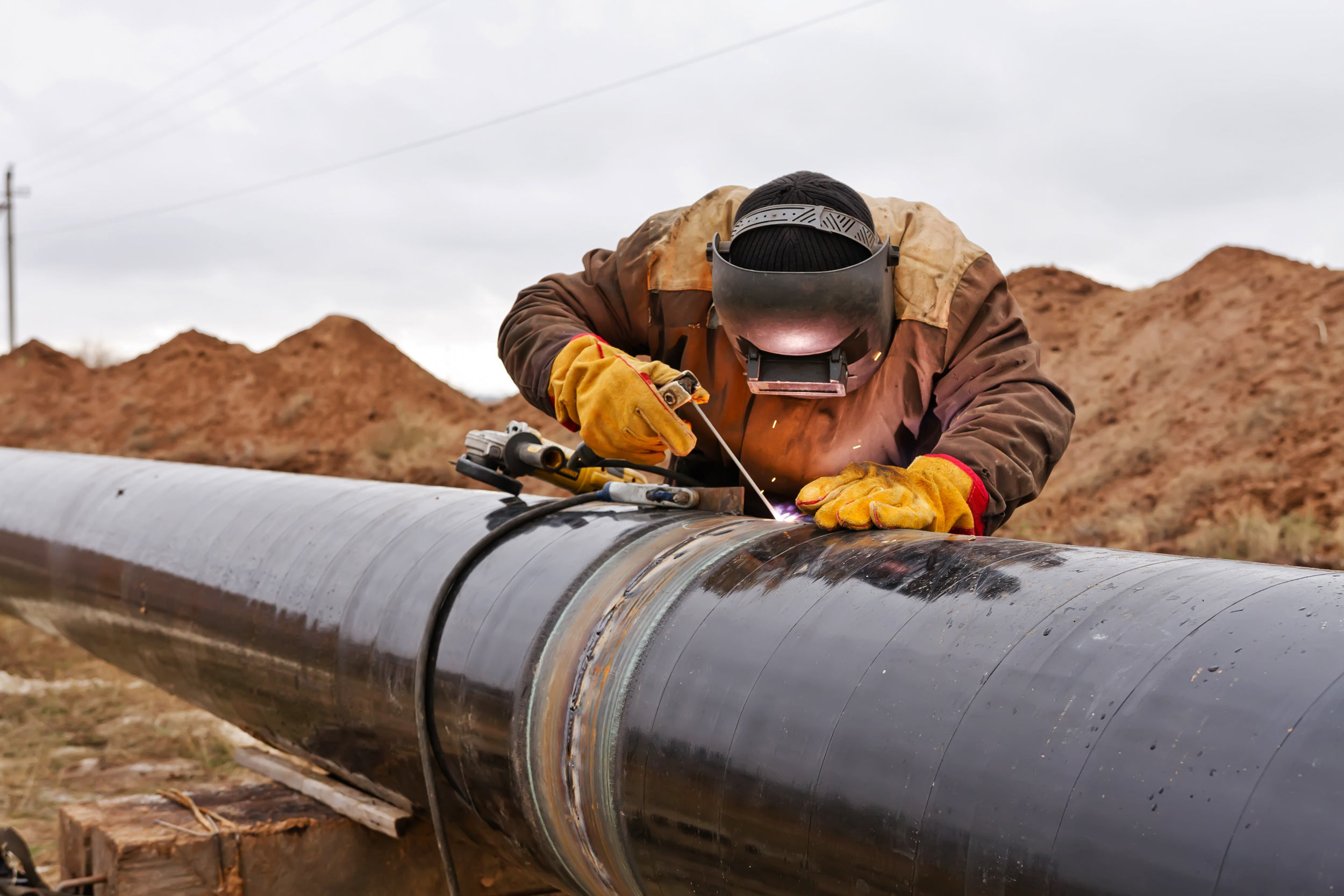Ways Pipeline Construction Excellence Supports Green Energy Goals
Exploring the Future of Pipeline Construction: Trends and Technologies to View
The pipiline construction market gets on the verge of considerable evolution, driven by developments in products, automation, and sustainability techniques. With the intro of advanced composite products and the integration of robotic technologies, tasks are becoming not just a lot more reliable however likewise safer and eco responsible. Smart tracking systems are established to reinvent upkeep methods via real-time data analytics. As these fads unravel, the implications for regulative compliance and industry criteria come to be progressively essential. What stays to be seen is exactly how these growths will reshape the landscape of pipiline construction in the coming years.
Emerging Products in Pipeline Construction
Current innovations in pipiline construction have underscored the relevance of ingenious materials that improve toughness and efficiency. The industry has actually progressively turned to composite materials, such as fiberglass enhanced plastic (FRP) and carbon fiber, as a result of their remarkable strength-to-weight proportions and resistance to rust. These materials significantly extend the lifespan of pipelines, reducing the need for frequent maintenance and replacement, which can be both expensive and disruptive.Another remarkable growth is the use of high-density polyethylene (HDPE), which has actually acquired grip for its adaptability and resistance to cracking and ecological tension. HDPE pipelines are particularly helpful in applications where ground movement positions a danger, as they can endure significant deformation without stopping working. Additionally, the light-weight nature of HDPE promotes simpler transport and installment, even more improving project efficiency. Pipeline Construction Excellence.Moreover, developments in nanotechnology have led the method for the creation of products with improved residential properties. Incorporating nanoparticles right into traditional polymers or steels can enhance strength, decrease weight, and also impart self-healing abilities, significantly improving the longevity of pipiline systems.Lastly, the integration of wise materials, which can reply to ecological modifications, stands for a frontier in pipiline construction. These products can keep track of tension and corrosion in real-time, permitting positive maintenance and reducing the chance of disastrous failings
Automation and Robotics in Construction
In a period where performance and accuracy are paramount, the integration of automation and robotics in pipiline construction is transforming sector practices. This technical development is poised to boost productivity while minimizing human mistake, thereby attending to some of the historical obstacles in this sector.Robotic systems are increasingly utilized for jobs such as welding, examination, and excavation. Midland Pipeline Construction Authority. These devices can run in dangerous settings where human existence might be risky, therefore protecting worker health and wellness and security. Furthermore, automated welding robotics assure constant quality and lower the possibility of issues, which can have considerable monetary implications.Drones are an additional critical element of this improvement. They are made use of for aerial surveying and mapping, giving real-time data that can inform job planning and execution. This capacity makes it possible for job managers to make educated decisions swiftly, optimizing source allowance and decreasing delays.Furthermore, making use of automation in pipiline construction permits enhanced accuracy in jobs such as pipeline placement and setup. This degree of accuracy not only boosts the honesty of the pipiline system yet also decreases the need for expensive rework.As the sector remains to accept these technologies, the capacity for raised efficiency and minimized functional expenses becomes evident. The relocation towards automation and robotics is not just a pattern yet a calculated action to the advancing demands of pipiline construction, establishing a brand-new requirement for future projects. The ongoing development in this area will certainly form the landscape of construction, driving advancement and affordable advantage
Smart Checking Technologies
The landscape of pipiline construction is significantly being shaped by wise tracking innovations that improve operational oversight and maintenance effectiveness. These sophisticated systems utilize a combination of sensing units, information analytics, and real-time communication to provide thorough insights right into pipiline problems, allowing drivers to make informed choices quickly.One of the vital parts of wise surveillance technologies is the implementation of Internet of Things (IoT) sensors along pipiline networks. These sensing units continuously accumulate data on numerous specifications, including pressure, temperature level, and circulation rates. By leveraging this data, operators can recognize anomalies that may show prospective leakages or other concerns, permitting timely interventions that protect against pricey failures and ecological damage.Moreover, the combination of artificial intelligence algorithms right into monitoring systems enables predictive upkeep strategies. By analyzing historic data and identifying patterns, these algorithms can forecast prospective tools failings prior to they occur, substantially lowering downtime and repair work costs. In addition, cloud-based platforms promote the central storage and analysis of information, making it accessible to stakeholders regardless of location.Furthermore, clever monitoring technologies can boost safety methods by supplying real-time alerts to operators pertaining to hazardous conditions. This positive technique not only safeguards employees however likewise assures conformity with regulatory requirements.
Sustainable Practices and Materials
As the pipiline construction industry develops, the unification of environment-friendly products has actually emerged as an essential focus for reducing ecological effect. Advancements in sustainable materials not just boost structural honesty but also add to lowering the total carbon impact of pipiline tasks. By focusing on these techniques, business can line up with international sustainability goals while keeping functional effectiveness.
Eco-Friendly Materials Innovations
Technologies in environmentally friendly materials are reinventing pipiline construction, promoting sustainable techniques that lessen environmental effect. As the sector deals with enhancing stress to reduce its ecological footprint, products such as bio-based plastics, recycled metals, and composite products are acquiring grip. These options not only give longevity and strength yet additionally considerably reduce reliance on fossil fuels.Bio-based plastics, originated from renewable energies, provide a sustainable choice for pipiline finishings and linings, boosting resistance to deterioration and chemical damages. Recycled metals, sourced from deactivated pipelines and various other infrastructure, add to a circular economic climate by decreasing waste and conserving natural deposits. Moreover, advanced composite products, which combine fibers and materials, page offer a lightweight yet durable option, decreasing transport exhausts and facilitating less complicated installation.Additionally, developments in finishes that utilize safe, ecologically friendly substances are additionally enhancing the sustainability of pipiline construction. These developments not only protect pipelines from ecological hazards however likewise alleviate contamination threats during procedures. By embracing these environmentally friendly materials, the pipiline construction industry is taking significant strides towards a more lasting future while dealing with the pushing difficulties postured by environment change and resource deficiency.
Minimizing Carbon Footprint
Emphasizing sustainable methods and products is necessary for pipiline construction to successfully decrease its carbon impact. The sector is increasingly adopting ingenious techniques that focus on environmental stewardship while keeping operational efficiency. One substantial pattern is making use of low-carbon products, such as recycled steel and bio-based polymers, which not only reduce greenhouse gas discharges during production however additionally boost the resilience of pipelines.Additionally, advanced construction techniques, including modular construction and prefabrication, improve the structure procedure, thereby reducing waste and energy usage. Applying electronic innovations like developing details modeling (BIM) enables more accurate job planning and resource allocation, more mitigating environmental impacts.Moreover, pipiline drivers are discovering sustainable energy sources for functional power, reducing dependence on nonrenewable fuel sources. The integration of carbon capture and storage (CCS) technologies is likewise obtaining traction, supplying a method to balance out emissions connected with pipiline operations.Ultimately, the commitment to sustainable techniques in pipiline construction not just addresses governing demands however additionally reacts to growing public need for environmentally liable framework. By taking on these practices, the sector can lead the way towards a much more sustainable future while making certain the honesty and performance of pipiline systems.
Digital Twins and Simulation
While the construction sector has typically counted on physical versions and manual procedures, the development of digital twins and simulation technologies has actually revolutionized project preparation and implementation. Digital twins are virtual reproductions of physical properties that incorporate real-time information, enabling stakeholders to imagine and handle pipiline tasks much more effectively. By creating a comprehensive electronic model, job groups can examine efficiency, predict end results, and make educated choices throughout the construction lifecycle.Simulation modern technologies better enhance this procedure by permitting groups to evaluate different situations and evaluate their potential influences before execution. This ability is particularly vital in pipiline construction, where environmental problems, regulative demands, and logistical challenges can considerably affect task timelines and expenses. By mimicing different circumstances, engineers can identify optimal construction methods, resource allotments, and timetables, inevitably decreasing dangers and enhancing efficiency.Additionally, digital twins help with enhanced partnership amongst project stakeholders. As details is continuously upgraded in real-time, all included parties have accessibility to the same information, promoting openness and making sure positioning on task objectives. This seamless assimilation of information can lead to quicker decision-making and more dexterous reactions to unpredicted difficulties.
Boosted Precaution
Governing Modifications and Compliance
Regulatory adjustments and conformity are crucial components forming the landscape of pipiline construction. As environmental worries and public safety proceed to gain importance, regulatory bodies are significantly applying rigid guidelines that control every element of pipiline jobs (Pipeline Construction Authority). These policies include a vast array of variables, including emissions standards, land usage, and waterway security, demanding that business continue to be attentive and adaptable.In recent years, we have actually seen a significant change toward extra robust conformity structures. Agencies such resource as the Pipeline and Hazardous Products Safety Administration (PHMSA) in the United States have actually presented extensive policies intended at minimizing risks connected with pipiline operations. This includes requireds for innovative surveillance modern technologies and normal assessments to ensure adherence to security criteria. Organizations need to invest in training and resources to satisfy these progressing requirements.The international landscape is not fixed; international arrangements and regional policies additionally play a role in shaping compliance methods. Firms took part in cross-border projects have to browse an intricate web of lawful commitments that vary from region to area, usually resulting in boosted functional prices and project delays.Furthermore, the trend towards enhanced openness and public engagement is reshaping exactly how business approach pipiline construction. Stakeholder input is now much more essential than ever, requiring companies to be aggressive in resolving neighborhood concerns connected to environmental influence and safety
Frequently Asked Questions
What Are the Key Obstacles Encountering Pipeline Construction Today?

How Does Environment Modification Impact Pipeline Construction Practices?
Environment adjustment significantly influences pipiline construction methods by necessitating improved environmental assessments, boosted regulative compliance, and the fostering of durable framework styles (Midland Pipeline Construction Authority). These adjustments aim to reduce threats related to severe climate occasions and shifting eco-friendly problems

What Functions Do Stakeholders Play in Pipeline Task Development?
Stakeholders in pipiline project advancement include governmental companies, ecological organizations, local communities, and investors. Their roles include regulative conformity, environmental analyses, area interaction, and financial backing, ensuring projects straighten with societal needs and sustainability goals.
How Is Public Understanding Influencing Pipeline Construction Projects?

Public perception significantly affects pipiline construction tasks, as area worries regarding ecological effect, safety and security, and financial benefits can bring about boosted scrutiny, governing hurdles, and task delays, inevitably shaping the decision-making procedures of stakeholders included.
What Is the Future Task Market Expectation for Pipeline Construction Professionals?
The future work market for pipiline construction specialists shows up appealing, driven by raising infrastructure financial investments and technical improvements. Need for proficient labor is anticipated to climb, emphasizing the demand for training in arising construction approaches and safety and security protocols.